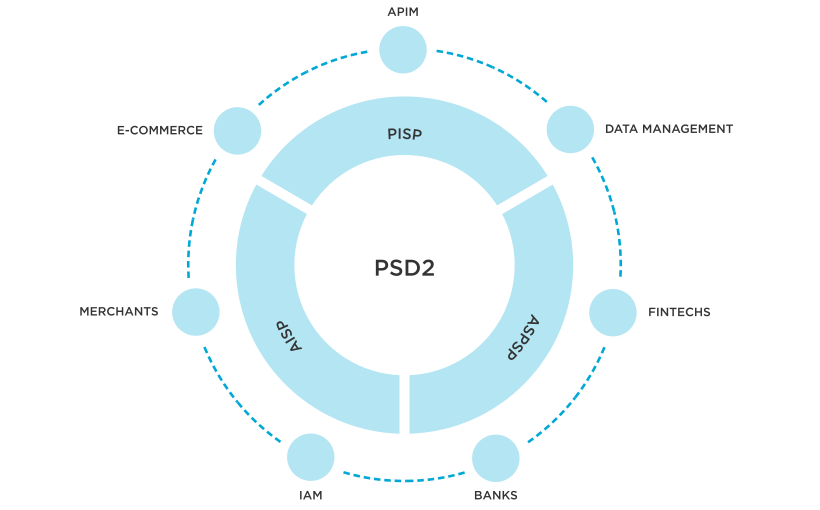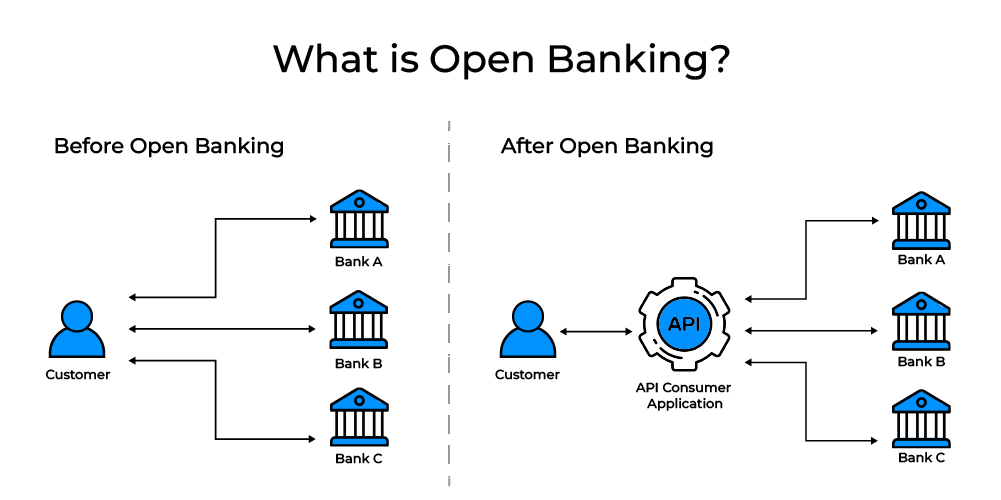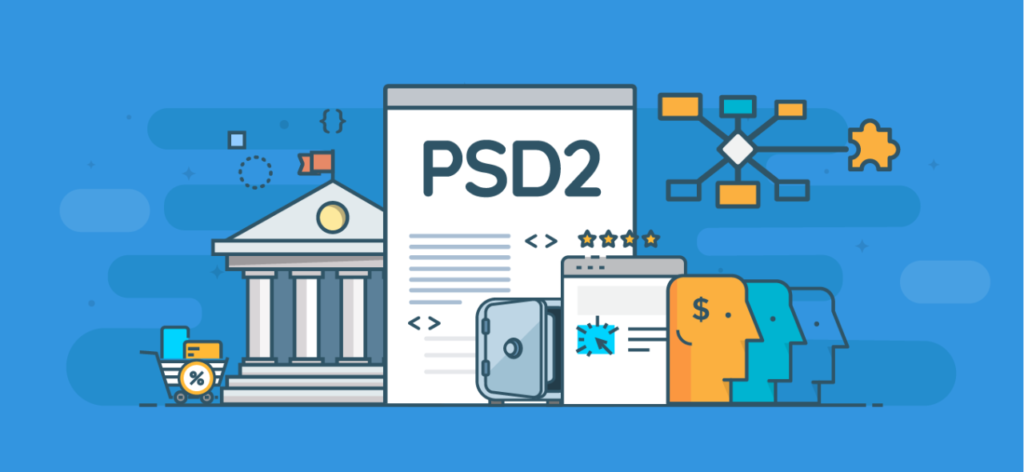Two of the very important regulatory frameworks that came up, defining clearly the destined change in how banking services will operate and interface with its consumers in the dynamic landscape of financial technology, are the PSD2—Revised Payment Service Directive—and Open Banking.
These will not only help improve competition and protect stakeholders in the financial landscape across the globe but will also foster innovation and enhance payment security.
In other words, it delves deeply not only into the origins and regulatory framework of PSD2 and Open Banking but also into its impacts, challenges, and prospects, including an in-depth explanation of what these terms embody.
What is PSD2?

PSD2 stands for the Revised Payment Service Directive. It is a new regulatory framework that the European Union has enforced to shape the payment services and increase protection for the consumers of payment services within the Single Euro Payments Area (SEPA).
Formulated as an amendment to the 2007 Payment Services Directive, PSD2 is aimed at helping to create a more integrated and efficient European payments market that stimulates competition and encourages innovation while maintaining security levels high.
Key Components of PSD2:
- Open Banking Requirement: Possibly the truly disruptive part of PSD2 is the requirement on banks to open their own payments infrastructure to any licensed Third Party Providers (TPPs) through secure Application Programming Interfaces (APIs). That allows the TPP to obtain customer account information, initiate payments from consumer accounts, and offer innovative financial services with explicit approval of the consumer.
- Strong Customer Authentication (SCA):PSD2 mandates strict security requirements, such as strong customer authentication (SCA), to safeguard electronic payments. So, SCA ensures that a transaction is performed through two or more independent factors, falling into the knowledge (something only the user knows), possession (something only the user possesses), and inherence (something the user is) categories.
- Consumer Rights Enhancement: PSD2 finally does away with the porousness of consumer rights in payment service by making sure of decisive changes in transparency in pricing payment services, dispute resolution, and liability rules on unauthorized transactions. This directive transfers the power into the consumer’s hands in relation to maintaining, sharing, and using their financial data or payment preferences.
What is Open Banking?

Open Banking is not only a term for the regulatory scheme in the PSD2 regulation. Open Banking is a much bigger concept, and all global initiatives supporting sharing, collaboration, and innovation in the financial services domain.
While PSD2 has a clear focus on payment services, Open Banking is about the safe sharing of financial data by banks, fintechs, and other licensed third-party providers towards creating better customer experiences and exerting healthy competitive market forces.
Key Principles of Open Banking:
- Data Sharing and Access: Access is enhanced through open banking to data consensually provided by the consumer in a secure manner to them, all through common APIs. This should pave the way for innovative financial product and service development, which may serve consumer needs in a new way, such as personal budgeting tools, loan comparison marketplaces, or investment management apps.
- Competition and Innovation: Open Banking fosters competition, innovation in the financial services sector, and further fuels competition by opening up access to existing bank infrastructures for third-party fintech and other third providers. This enables them to create innovative ways of payments, seamless account-aggregating services, and financial advice platforms that are customer-centric.
- Regulatory Frameworks: Even though Open Banking is based on PSD2 to some extent in Europe, around the world, nations have adopted such frameworks that perfectly align based on their regulatory aspects. These frameworks guide a fine line between innovation and the consumer’s interest by ensuring a safe and transparent financial marketplace that promotes trust and confidence among stakeholders.
Impacts of PSD2 and Open Banking
Convenience and Service:
- Impact: The PSD2 and Open Banking give the control back to the consumers and consent to consume and distribute their customer data such that the consolidated information about all the services from all the different financial institutions is easy to access through third-party applications.
- Example:
- A customer would be able to aggregate the account information, conduct spend tracking for accounts held at several banks, budget the money one has, and manage it in a much better way for greater financial literacy and choice.
- This allows for the cultivation of innovation in payment solutions, digital banking service, and personalized financial products.
Increased Competition and Innovation in Financial Services:
- Impact: PSD2 and Open Banking stimulates competition among banks and fintechs, fostering innovation in payment solutions, digital banking services, and personalized financial products.
- Example: Fintech startups leverage access to banking APIs to offer new services such as instant payment initiation, automated savings tools, and customized investment advice, challenging traditional banking models.
Improved Efficiency and Lower Costs in Payments:
- Impact: Since PSD2 requires open APIs to be implemented and thus promotes ease in interoperability within and between financial institutions, it will be enable faster, more convenient ways to make payments transactions securely at a lower cost.
- Example: Businesses can streamline payment processes, reduce transaction fees, and offer seamless checkout experiences to customers, contributing to overall economic efficiency.
Enhanced Security and Fraud Prevention:
- Impact: Strong PSD2 will add an extra level of security based on multifactor authentication, in recognition of SCA requirements stated under PSD2, to make the payment transactions carried out securely without any fraud or other unauthorized activity.
- Example: Consumers benefit from reduced risk of fraudulent transactions, as SCA mandates authentication methods that are difficult for unauthorized parties to replicate or access.
Global Influence and Regulatory Evolution:
- Impact: PSD2’s regulatory framework has influenced global financial regulations, inspiring similar Open Banking initiatives in regions outside the EU.
- Example: Countries such as Australia, Canada, and Japan have adopted Open Banking principles to promote competition, innovation, and consumer protection in their respective financial sectors, contributing to a more interconnected global financial ecosystem.
PSD2 and Open Banking – Challenges and Considerations
Technological Integration and Interoperability:
- Challenge: Banks and TPPs face challenges in implementing standardized APIs and ensuring seamless integration with existing IT systems and platforms.
- Consideration: Investment in robust technology infrastructure, API standardization, and interoperability testing is crucial to overcoming technical barriers and facilitating secure data exchange.
Data Privacy and Security Risks:
- Challenge: Concerns about data privacy and cybersecurity threats arise with increased data sharing between banks and third-party providers.
- Consideration: Compliance with GDPR and other data protection regulations, implementation of encryption protocols, and continuous monitoring of security measures are essential to mitigate risks and build consumer trust.
Regulatory Compliance Complexity:
- Challenge: Financial institutions must navigate complex regulatory requirements and varying interpretations of PSD2 and Open Banking guidelines across different jurisdictions.
- Consideration: Collaboration with regulatory authorities, proactive compliance strategies, and investment in legal expertise are critical to ensuring adherence to regulatory frameworks and avoiding penalties.
Consumer Awareness and Trust:
- Challenge: Building consumer awareness and trust in Open Banking requires transparent communication about data-sharing practices, security measures, and the benefits of sharing financial information.
- Consideration: Education campaigns, clear consent mechanisms, and effective customer support are essential to enhancing consumer confidence and encouraging the adoption of Open Banking services.
Impact on Incumbent Financial Institutions:
- Challenge: Traditional banks may face disruption to their business models and revenue streams as fintechs and new entrants leverage Open Banking APIs to offer competitive services.
- Consideration: Adaptation of business strategies, partnerships with fintechs, and investment in digital transformation initiatives are necessary for incumbents to remain competitive and retain customer loyalty in a rapidly evolving market.
Future Prospects and Innovation for – PSD2 and Open Banking
Expansion of Open Banking Beyond Payments:
- Prospect: PSD2 and Open Banking principles are expected to expand to include a broader range of financial services such as lending, insurance, wealth management, and digital identity verification.
- Innovation: Innovations in AI, blockchain, and decentralized finance (DeFi) will drive the development of new financial products and services that cater to diverse consumer needs and preferences.
Global Adoption and Regulatory Harmonization:
- Prospect: Increased adoption of Open Banking frameworks worldwide, supported by efforts to harmonize regulatory standards and promote cross-border data-sharing agreements.
- Innovation: Collaborative partnerships between regulators, financial institutions, and technology providers will facilitate global financial integration and stimulate economic growth in interconnected markets.
Advancements in Financial Inclusion and Accessibility:
- Prospect: PSD2 and Open Banking initiatives will enhance financial inclusion by providing underserved populations with access to affordable financial services and tailored products.
- Innovation: The development of inclusive banking solutions, microfinance platforms, and mobile banking applications will empower individuals and businesses in emerging markets to participate in the global economy.
Integration of Emerging Technologies:
- Prospect: Integration of AI, machine learning, and big data analytics into Open Banking platforms will enable personalized customer experiences, real-time decision-making, and predictive financial insights.
- Innovation: Use cases include AI-powered chatbots for customer service, risk assessment algorithms for lending, and automated investment advisory services tailored to individual financial goals.
Evolving Regulatory Frameworks and Consumer Protection:
- Prospect: Continued evolution of regulatory frameworks to address emerging risks, protect consumer rights, and ensure ethical use of data in the digital economy.
- Innovation: Implementation of advanced cybersecurity measures, ethical AI guidelines, and responsible data governance practices will safeguard consumer interests while fostering innovation and market competitiveness.
These points highlight the multifaceted impacts, challenges, and future opportunities associated with PSD2 and Open Banking, emphasizing their transformative potential in shaping the future of financial services globally.
Conclusion
PSD2 and Open Banking are changing the landscape of the financial services industry by promoting competition, innovation, and consumer empowerment through enhanced regulatory frameworks and data-sharing mechanisms.
Clear benefits from open banking, such as improved customer experience, increased market share through competition, and financial innovation through technology, are quick-tracking stakeholders in the industry toward the digital transformation bandwagon, with the capturing of new openings in the global market.
The future of PSD2 and Open Banking, for that matter, will definitely be in a brighter, more inclusive, safe, and connected financial ecosystem, enabling consumers and businesses to flourish.

